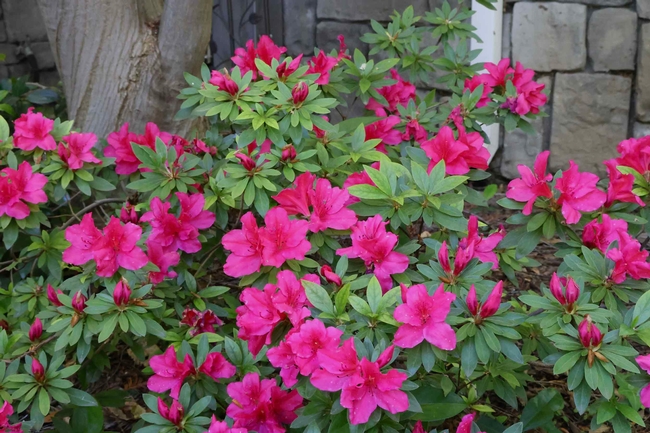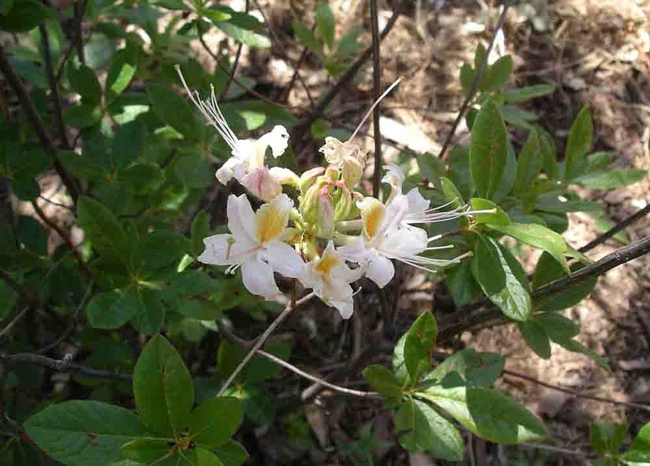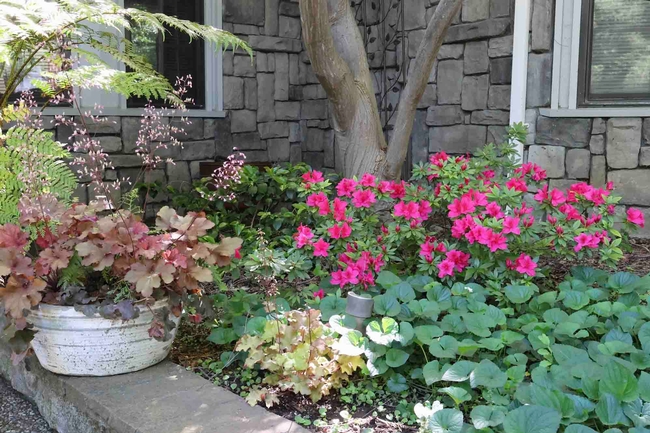A colorful perennial has been brightening spring gardens for many weeks. Azaleas are the easy-to-care-for stars of semi-shaded locations. The most common varieties are evergreen azaleas, which are more accurately described as having “persistent-leaves.” They grow a set of spring leaves which are dropped in the fall, and a set of summer leaves which persist through the winter.

Azaleas are long-lived and can be used as permanent plantings, so consider the following factors before planting them in your yard.
Exposure: Azaleas prefer cool, partially-shaded sites, such as under under pine, oak or maple trees.

Mulch: A two- to three- inch layer of organic mulch (leaves, pine bark, wood chips) will conserve moisture and help discourage weeds. Extend the mulch a couple of inches from the main stem to keep the bark dry.
Watering: Azaleas are shallow-rooted. If possible, use soaker hoses or drip irrigation to slowly water the base of the plants. Overhead irrigation may promote disease.
Fertilizing: If planted properly, supplemental feeding is unnecessary.
Pruning: The best time to prune is in spring, just after the plant has finished blooming.
My existing plant didn't bloom, now what? --You may already have azaleas and are disappointed that they no longer bloom. You may need to give them more sun, perhaps by opening up the branches of the overhead trees, as well as pruning the azaleas to increase next year's buds.
Reasons for stingy flowering or lack of blooms include:
- The azaleas were allowed to dry out or to have wet feet. A two- to- three-inch- deep layer of mulch can help with water retention. Check the irrigation to make sure they are not being over-watered.
- Fertilizing with too much nitrogen may interfere with blooming. Did the plants receive fertilizer while you were feeding the grass?
- If you pruned after the flower buds developed, next year's flowers were inadvertently removed. Prune shortly after this year's flowers fade.
- Less than three hours of sun per day reduces the number of buds. Prune overhead trees, or consider moving the plant and its root ball to a better location.

PLANT SALE! Mark your calendar for our plant sale onSaturday, May 18, 2024 from 9 am–noon. The sale will be held at the Master Gardeners Demonstration Garden at Patrick Ranch. The plants, which are selected to thrive in our climate, have been propagated by UC Master Gardeners of Butte County. For more information and a partial list of the plants that will available, visit our website.
UC Master Gardeners of Butte County are part of the University of California Cooperative Extension (UCCE) system. To learn more about us and our upcoming events, and for help with gardening in our area visit our website. If you have a gardening question or problem, email the Hotline at mgbutte@ucanr.edu or leave a phone message on our Hotline at 530-552-5812. To speak to a Master Gardener about a gardening issue, or to drop by the MG office during Hotline hours, see the most current information on our Ask Us section of our website.